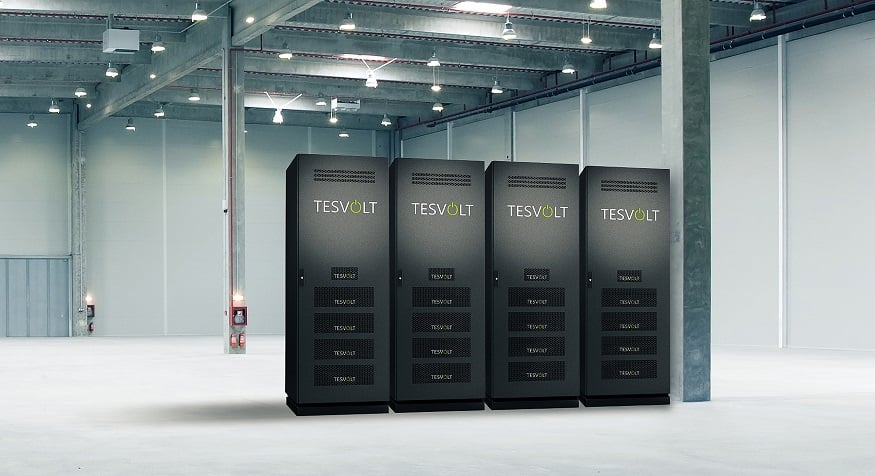
There is a global trend towards longer duration energy storage and even in this segment, lithium-ion batteries are expected to dominate the market over flow batteries and other technologies, an I.H.S Markit analyst has told Energy-Storage.News.
The research firm issued its bi-annual Grid-Connected Energy Storage Tracker to its clients at the end of July, predicting the rise of grid-connected systems from an installed base of less than 4GW today to hit 52GW by 2025.
The company found that 1.3GW was deployed worldwide in 2016, expected to rise by 2020 to 4.7GW and then 8.8GW by 2025, corresponding to annual revenues of US$1.5 billion rising to US$7 billion in that time, a compound annual growth rate of 16%.
Try Premium for just $1
- Full premium access for the first month at only $1
- Converts to an annual rate after 30 days unless cancelled
- Cancel anytime during the trial period
Premium Benefits
- Expert industry analysis and interviews
- Digital access to PV Tech Power journal
- Exclusive event discounts
Or get the full Premium subscription right away
Or continue reading this article for free
Leading regional markets
I.H.S Markit identified three leading regions that are driving forward in energy storage deployment fastest: California, where subsidies such as the SGIP (Self-Generation Incentive Program) and a mandate for investor-owned utilities to procure 1.35GW of energy storage, coupled with a corresponding growth in PV and other distributed energy technologies have lead the way; South Korea, where utilities, many government-owned, have been procuring large-scale frequency regulation projects directly and are moving on to renewables-integration projects, with I.H.S expecting more than 300MW annual growth from 2018 onwards; the much-talked about Australian market, where high electricity costs and relatively low grid reliability have pushed the solar PV market forward and energy storage is now following, with large-scale storage tenders and high profile projects such as Tesla’s in South Australia and Lyon Group’s 640MWh tender.
By country, six leaders were picked out for now and for the near future: the US, South Korea, Japan, Germany, Australia and the UK. The former will enjoy compound annual growth rates of 21% between 2017 and 2025, with 1.2GW of grid-connected systems forecast to be deployed in 2020.
Technology trending towards long(er) duration energy storage
In general terms, after a recent period of growth in single-application energy storage deployments, from frequency regulation and other grid-balancing and ancillary services markets to self-consumption of solar PV generation, I.H.S is expecting to see an increase in uptake of solar-plus-storage projects and utility deployment of dispatchable resources to meet capacity requirements.
One knock-on effect of this increase in dispatchable solar PV, in particular, will be a rise in the duration requirements of energy storage plants.
“At the moment it’s mainly around somewhere between 2-6 hours, that’s where a lot of growth is going to be,” Jansen said.
“It’s interesting because in the past we’ve attributed that opportunity specifically to non-lithium-ion technologies. But what we’ve seen over the past year or so is that for four hour systems, lithium-ion is becoming competitive.”
The tracker refers to a 70% drop in lithium battery prices since 2012, predicting that sub-US$200/kWh systems will be on the market by 2019. This price drop, coupled with some recent real-world examples of lithium being used for capacity projects with longer durations, mean that while flow batteries and other long duration energy storage technologies might seem the natural fit for such projects, in practise, lithium-ion will likely continue to dominate. Jansen gave the example of the Aliso Canyon procurements in the US, where several energy storage projects have been deployed to help deal with capacity shortfall and energy security issues. As Jansen pointed out, the majority of those projects sit in the four-hour duration segment of the market.
These peaking capacity projects “showed lithium-ion can be active in that type of segment”, Jansen said. Meanwhile, other installations and tenders in locations like Hawaii and Australia point in a similar direction, with dispatchable solar enabled by utility-scale battery energy storage in various projects.
“In a sense, that scale of project is something that flow batteries and other technologies haven’t achieved yet. So if you can prove that the four-hour systems there are working well and competitively, then it points in the direction that in the long term, lithium-ion will also in that four hour segment be the dominant technology – that’s what we’re forecasting,” Jansen said.
Energy-Storage.News asked if this was a quirk of the market – whether better informed customers might take more time in choosing between lithium-ion and other alternatives, especially when flow battery makers have long touted the suitability of their systems to provide much longer durations of energy storage than even four hours, at a theoretically lower cost over the lifetime of the systems. One CEO of a flow energy storage manufacturer, Scott McGregor of RedT, even said recently that the optimum installations would be hybrids that combine the power capabilities of lithium with the energy capacity of redox flow.
“I think the main thing at the moment is that it’s more competitive on price,” Jansen said of lithium’s dominance.
“If you actually look at some of the earlier barriers for storage development, let’s say even [for] lithium-ion, a lot of the problems were companies not being bankable, warranties not being guaranteed.
“The only technology at the moment moving into a space where you’re able to get secure funding, bankable projects because you have big companies behind it, you’re starting to have warranties and actually re-insurance of warranties. The only technology that can currently achieve that is lithium-ion.
“So if you’re an investor, or project developer or even a utility that’s going to buy the electricity, you’ll want a guarantee that you’ll get 20 years of electricity at that price, the likelihood is that you’re going to go for a proven lithium-ion battery manufacturer and a proven integrator who ideally have a big company behind them rather than going for a start-up style flow battery company that has been struggling for the past five years to get projects and get anyone to insure the system.”
Ultimately, Jansen said, it was likely to be natural that investors and utilities would be somewhat risk-averse in taking on new technologies and suppliers and would see lithium-ion as a relatively safe choice.
Read an interview with Julian Jansen on the potential for energy storage in the Middle East here.





